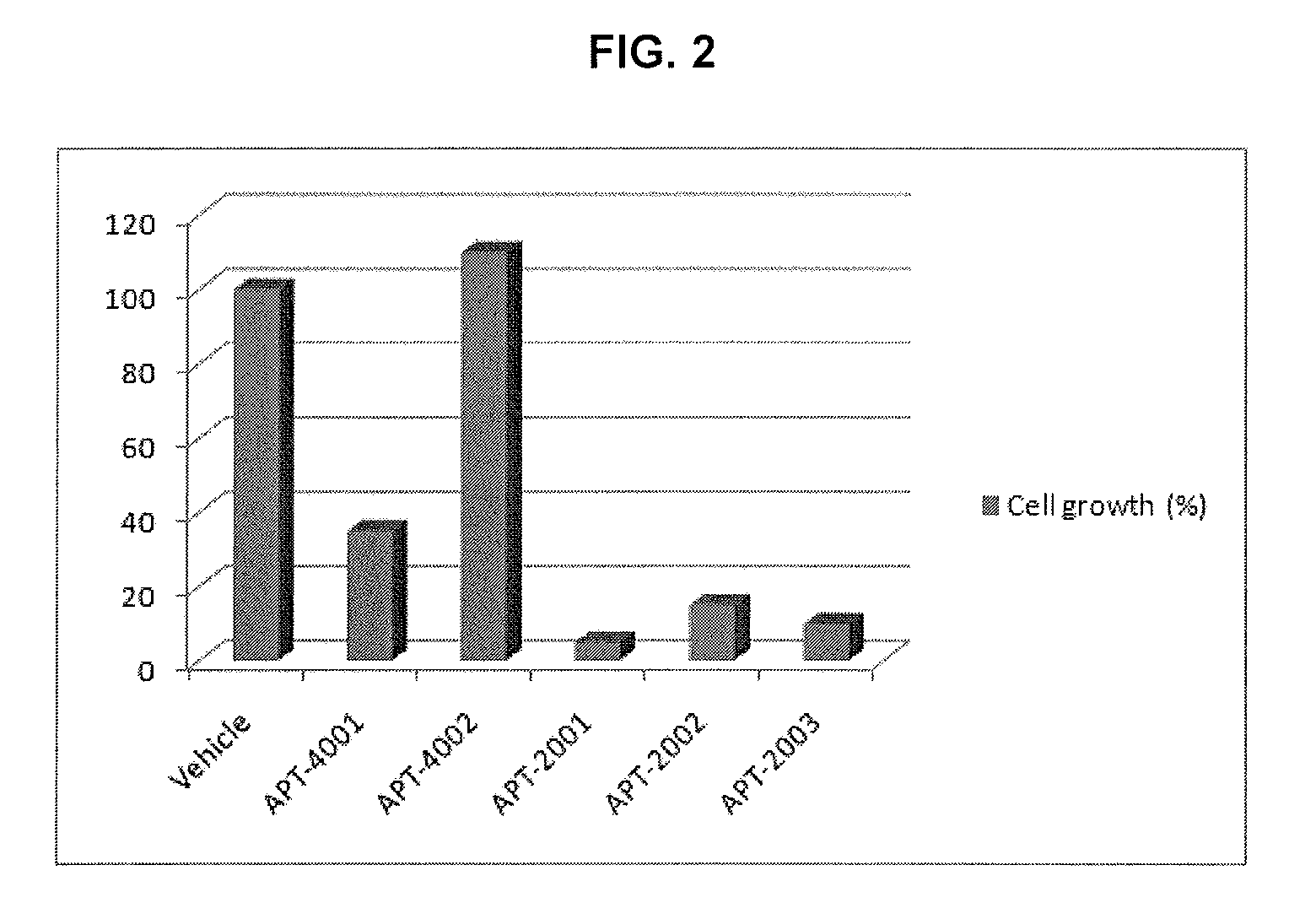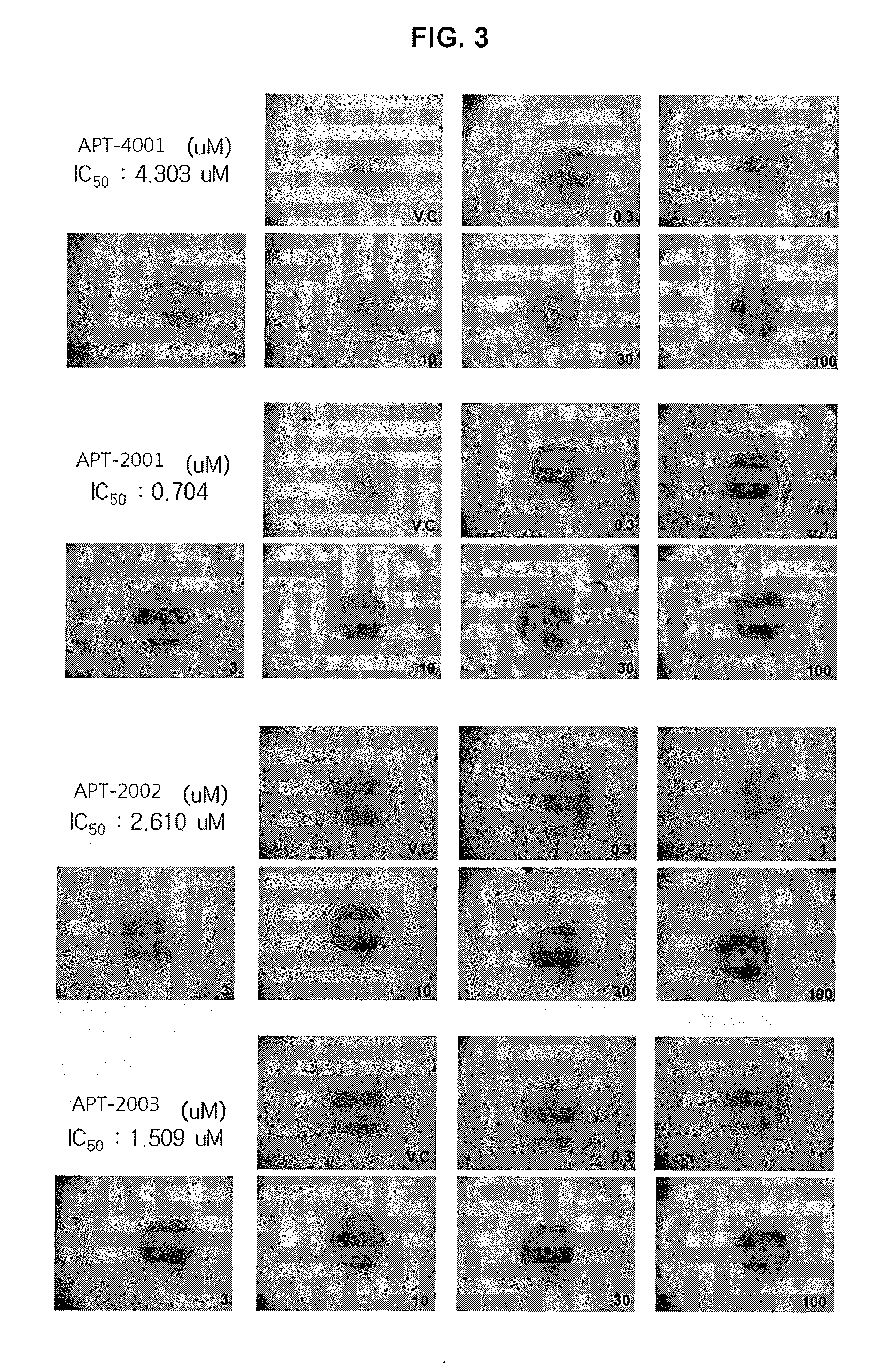Guanosine-rich modified oligonucleotides and antiproliferative activity thereof
a technology of guanosine-rich modified oligonucleotides and antiproliferative activity, which is applied in the direction of sugar derivatives, organic chemistry, drug compositions, etc., can solve the problems of not being able to selectively remove cancer cells, oligonucleotides have not been favored in the development of new drugs, and anticancer agents are extremely toxic, etc., to achieve excellent cell apoptotic activity
- Summary
- Abstract
- Description
- Claims
- Application Information
AI Technical Summary
Benefits of technology
Problems solved by technology
Method used
Image
Examples
example 1
Synthesis of Novel Modified Oligonucleotides
[0073]The novel modified oligonucleotides were synthesized using DNA synthesizer (Polygene, Inc.) in 1 μM scale with standard solid phase phosphoramidite chemistry. Deoxyguanosine, thymidine, deoxycytidine, 5-fluoro-deoxyuridine, Ara-C and TMP-5-fluoro-deoxyuridine-phosphoramidite were purchased from Glen research Corporation, which were then dissolved in dry acetonitrile to a concentration of 0.067M, and loaded into the solid phase DNA synthesizer.
[0074]DNA was synthesized in 3′→5′ direction to prepare the oligonucleotides whose sequences are shown in Table 1 below. With the 3′-OH of the first nucleotide being adhered to resin, a four-step chemical reaction comprising 5′-terminus detritylation, a coupling of a new base, capping of uncoupled DNA chain, and oxidation of phosphate group was repeated while a base is being added. Upon completion of the reaction, the protector was removed. Thus synthesized CPG resin was added into an ammonia so...
example 2
Synthesis of Modified Oligonucleotides
[0077]Each oligonucleotide was diluted in 10 mM Tris-HCl (pH 7.4) to a final concentration of 100 μM. The diluted solution was placed at 94° C. for 5 minutes and then quickly placed them on ice and left therein for 5 minutes. The resultant was added with 2M KCl to a final concentration of 50 mM, left at 60° C. for 3 hours and then slowly cooled down to room temperature.
experimental example 1
Measurement of Cell Apoptosis in Cancer Cells
[0078]One day before the experiment, 190 μL of culture, wherein PC-3 cell line(prostate cancer cell) was suspended at a concentration of 103-104 / mL, was inoculated respectively into each well of a 96 well plate. The next day, 10 μL of the oligonucleotide solution prepared in Example 1 was added and cultured for six days. Six days after the inoculation, cell apoptosis rate measured by means of XTT method [JBC 1999, 26369].
[0079]As a result, it was confirmed that the cell apoptosis rate of APT-2001, APT-2002 and APT-2003 (the novel modified oligonucleotides of the present invention), was 3-10 times higher than those of APT-4001 (positive control) and APT-4002 (negative control) as measured in terms of IC50 or IC90 (FIG. 2). Besides, APT-2001, APT-2002 and APT-2003, even at a smaller amount as compared to that of APT-4001 (positive control), showed superior cell apoptotic activity (FIG. 3). Further, other novel oligonucleotides prepared acco...
PUM
| Property | Measurement | Unit |
|---|---|---|
| temperature | aaaaa | aaaaa |
| size | aaaaa | aaaaa |
| structure | aaaaa | aaaaa |
Abstract
Description
Claims
Application Information
 Login to View More
Login to View More - R&D
- Intellectual Property
- Life Sciences
- Materials
- Tech Scout
- Unparalleled Data Quality
- Higher Quality Content
- 60% Fewer Hallucinations
Browse by: Latest US Patents, China's latest patents, Technical Efficacy Thesaurus, Application Domain, Technology Topic, Popular Technical Reports.
© 2025 PatSnap. All rights reserved.Legal|Privacy policy|Modern Slavery Act Transparency Statement|Sitemap|About US| Contact US: help@patsnap.com



